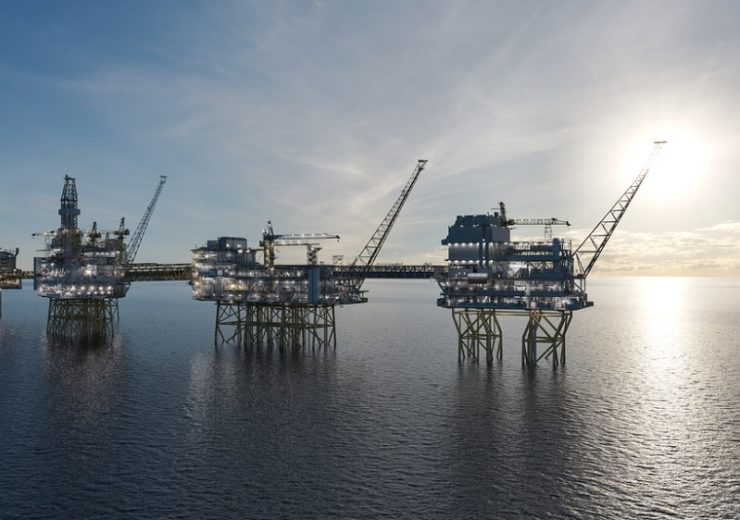The Norwegian state-backed energy giant will delay gas production until prices rebound, after market forces hit its third quarter 2019 earnings

Equinor's Johan Sverdrup oil project (Credit: Equinor)
Equinor has announced its earnings fell significantly in the third quarter of 2019, with results impacted by weaker than expected prices for liquids and gases.
Adjusted earnings for the Norwegian majority state-owned energy firm dropped to $2.59bn in the three-month period, compared to $4.84bn in the previous year, and below analyst predictions of around $2.69bn.
Overall production also declined – down 8% year-on-year during the quarter to 1,909 million barrels of oil equivalent per day – although the firm says its production “flexibility” has enabled it to defer gas production to a time when commodity prices are higher.
President and CEO Eldar Sætre said: “We maintain strong cost and capital discipline, but our results are impacted by lower commodity prices in the quarter.
“In addition, we have decided to use our flexibility to defer gas production to periods with higher expected prices.
“Based on our strong balance sheet and outlook for profitable growth, we have in the quarter demonstrated our commitment to capital distribution and are executing the first tranche of a five billion dollar share buy-back programme.”
Equinor hopes new projects will help it recover from weak third quarter 2019 performance
New projects and the extension of capacity of existing fields is expected to partly offset the decline in production, with the Johan Sverdrup oilfield – Norway’s third largest – in particular earmarked to provide a boost by the end of November, giving a capacity of above 300,000 barrels per day (b p/d).
The firm says it had completed 32 exploration wells and made 14 commercial discoveries, as of the end of the third quarter.
Sætre added: “Since the beginning of third quarter, we have started production from Trestakk, Mariner, Snefrid Nord, Utgard, and Johan Sverdrup.
“At Johan Sverdrup, the field has already achieved a daily production above 200,000 barrels.
“The five new fields are expected to deliver on average more than 200,000 high-value barrels per day net to Equinor in 2020.
“We are developing a portfolio of profitable projects with low-CO2 emissions, and we are on track to deliver strong production growth in 2020 and a 3% average annual production growth from 2019 to 2025.”
Equinor chief hails ‘game-changing’ offshore wind developments
The Equinor boss also said significant progress had been made in its offshore wind business, noting the “game-changing” award of contracts at the UK’s Dogger Bank windfarm and the US’ Empire Wind farm off New York.
Sætre added that development plans for its Hywind Tampen floating wind farm project — a $550m investment that will be used to power oil and gas drilling operations in the Norwegian Sea — had been delivered.
The project was announced earlier this month and will be the world’s first offshore wind farm used to power oil and gas platforms.
It also involves $250m of investment from Norway’s government and a further $62m from the NOx Fund, an initiative dedicated to curbing emissions.
Sætr said: “We have been systematically maturing technologies for floating offshore wind for almost 20 years.
“The decision by the Snorre and Gullfaks partners helps bring this technology an important step forward.
“About 80% of the global resource potential for offshore wind is in deep waters, and floating offshore wind may play an important part in the energy transition towards more sustainable global energy supply.
“This brings substantial opportunities for Norwegian industry.”
